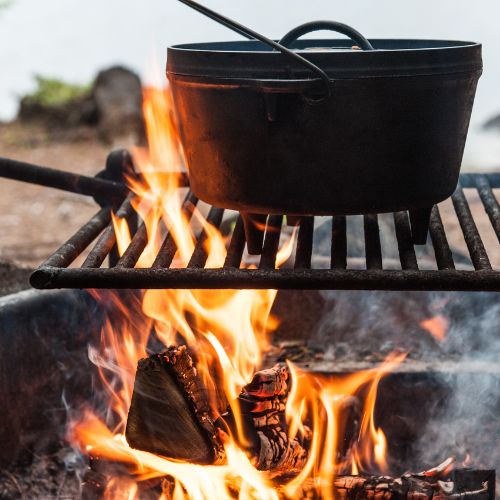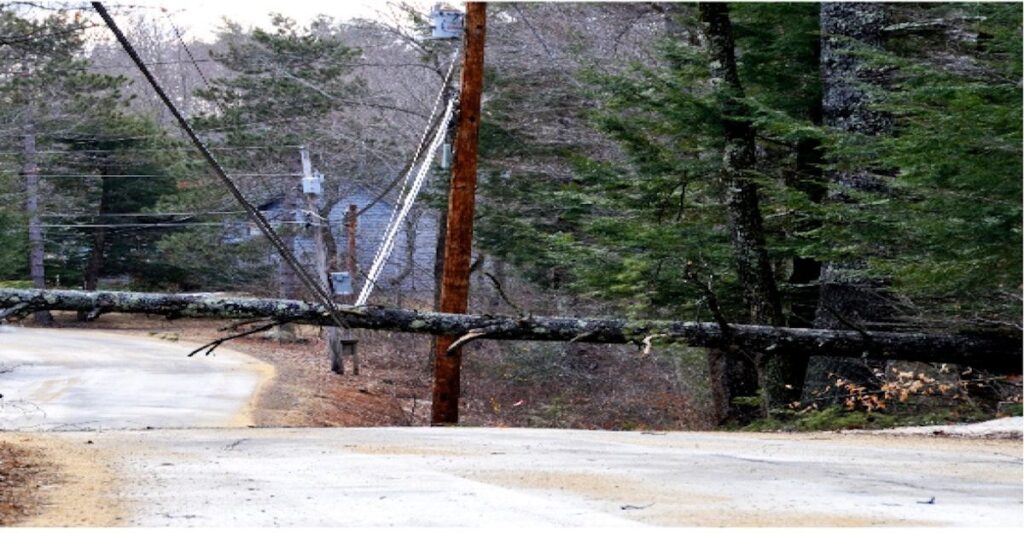Environment, Safety, Health, Handheld LED Lighting, Off Grid
Electrical Blackout Meal Preparation. Cooking the Old-fashioned Way.
A power outage for many Americans means hardship. Especially when it comes to cooking a meal. In the past, toasters, microwaves, and electric ovens didn’t exist, yet people successfully cooked hearty, flavorful meals for their families. Tasty meal preparation during an electrical blackout can be a simple and enjoyable experience.
Electrical cooking appliances ended daily open fire cooking. Goodbye American pioneer days. There are of course exceptions such as off-grid living, camping, back-packing and even RV glamping. These days, the closest most Americans get to open fire cooking is a backyard barbeque. If an electricity blackout is prolonged, would you know how to prepare a tasty hot meal?
Think like a Boy Scout or an Experienced Wilderness Adventurer
What steps are required to start a fire in a survival situation? Let’s complicate the scenario by adding inclement weather.
Wind and rain can ruin your best attempts. Preparing your campfire setup involves a few basic steps. Start with shelter, if you have a tarp, rope (cordage), and surrounding trees or posts orient the tarp to block unfavorable weather conditions. A basic lean-to structure will also suffice. No one likes standing in the rain when cooking, not to mention the difficulties of starting and maintaining a fire.
Using rocks or logs build a campfire ring at the entrance to your shelter. We’re talking about a cooking campfire and not a bonfire. Construct a fire ring so air flow can be controlled. Remember hot air rises so use this simple law of physics to your advantage and leave space under a section of the fire ring as an air intake.
Power Outage: The First Step to Cooking is FIRE
How are your fire-starting skills? Especially, if your wood supply is soaking wet from days of rain or you’re surrounded by several inches of snow. In wet conditions dry twigs, aka kindling, is essential for starting a fire. Rummage through low hanging tree branches as a starting place. The ground clutter is often too wet.
An alternative, using non-green branches and your trusty knife, whittle down into the branch core and produce dry shavings. On drier days explore all fire starter resources such as grasses, hanging moss and tree bark. You can also go the easy route by planning and using fire starters.
Building a Campfire and Choosing Fire Starters
Starting with kindling, build a teepee structure. Leave room for airflow between the branches. Use increasingly larger size dry branches to fuel your fire. The goal is to create a bed of coals for cooking and heat.
Select two Y-shaped branches for staking into the ground on either side of the firepit. Add a cross member for suspending your cookware. What’s your favorite fire starter? Long handle waterproof matches, butane lighter, and/or a steel fire striker.
Fuel Sources and Manufactured Cooking Products
The most suitable method for preparing meals without electricity depends on factors such as your location, budget, and preferred fuel source including gas (butane, propane, or white gas), wood, or charcoal. Remember, adequate ventilation is essential with any combustible material as is supervision of children around open flames and hot objects.

- Campsite Fire Pit with Grated Grill: Fuel sources include wood or charcoal. Utilizing a campfire for roasting, boiling, frying, or baking.
- Chimney Cookery Method: Using a fireplace for indoor cooking with precautions to avoid sparks. Memories of colonial homes.
- Open Flame Grilling: Gas, generally propane, or charcoal.
- Portable Outdoor Cooking Stove: Mobile version of Open Flame. Example is the Coleman Road Trip Grill.
- Outdoor Butane Burner Stove: Suitable for short-term use. Common with backpackers.
- Coleman Stove: using white gas as a fuel source. Portable. Introduced in WW2.
- Folding Stove: Utilizing compact folding stoves like Sterno for catering events or indoor use.
- Solo Stove: Portable stoves using wood or propane fuel source. It is also good for area heating.
- Wood Stove Cooking: Using traditional wood stoves for both heating and cooking.
- Rocket Stove: A simple and efficient wood-burning stove design, commonly used by preppers and survivalists.
- Solar Oven Technology: Harnessing solar energy for cost-effective and fuel-free cooking, with options like the Sunflair Portable Solar Oven.
These manufactured products offer a range of options for preparing meals without electricity and cater to different locations, budgets, and resources.
EcoCentricNow (LLC) Lighting Solutions for Outdoor Adventures
EcoCentricNow (ECN) employees and friends are passionate about spending time outdoors. These outings often include hot coals in the fire pit and pulling out the cast iron cookware to cook a delicious meal. To enhance your outdoor cooking experience ECN offers a range of portable lighting solutions, including flashlights, headlamps, and lanterns. Our handheld collection includes light options powered by primary batteries, rechargeable batteries, human power (shake and crank flashlights), and solar energy.
Contact EcoCentricNow LLC for details about our lighting merchandise.

